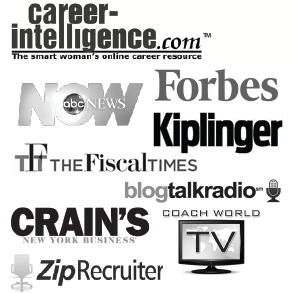
Sep 11, 2015 | coaching, Gen Y, personal development
It was gratifying to see Forbes magazine publish an article last month redefining the highly stigmatized liberal arts degree. Nearly three years ago, I was asked to kick off a three day Career Lab event at Brown University. In true liberal arts fashion, I was given free reign on my presentation and so I created “Leveraging your Liberal Arts Degree…for Competitive Advantage,” a talk designed to instill in the students the confidence that their liberal arts skills are absolutely marketable in a business world that continues its shift from knowledge-based to conceptual. “Back then” — as now — employers were hiring but having a difficult time finding qualified candidates. I agree with Anders’ enthusiastic celebration of all that liberal arts candidates bring to potential employers, not only in the tech world, but beyond. As I stated in early 2013, a “liberal arts curriculum gives you more than ‘just’ a well rounded, integrated education. It develops your critical thinking skills, exactly what employers are looking for today.” It’s true that employers are looking for more than just know-how — they need employees who think critically and can apply what they know to constantly changing situations. Today’s fast-paced marketplace demands far more than technical skills and job-specific knowledge. As with Big Data, it’s less important what you know that what you do with the knowledge. The required (and desired) list of employee attributes I detailed for those 2013 graduates three years ago hasn’t changed…BUT THE NEED HAS GROWN. The only things that have changed since then are the demand for such attributes (it’s greater) and the increasing recognition of how liberal arts degrees...

Aug 13, 2015 | critical thinking, gender roles in business, personal development, women
Last month, Good Morning America did a story on The Surprising Reason Girls Aren’t Learning to be Leaders. (See the clip here). In it, the experts weighed in on the biases girls still face — from many sources including parents, teen boys and even from each other. The clip and accompanying article offered some solid tips, including checking our own biases as parents, assigning chores in less traditional ways, and watching the words we use toward our children — and others. In doing so, they touched on something great when they mentioned “changing things up at home” and assigning boys some caregiving chores versus the more traditional “mow the lawn” assignments. I wish they’d gone further into this critical component to changing the insidious biases so deep rooted in the world — how we raise our sons. Here’s my comment on their post, reprinted for you: “While there’s plenty of responsibility for women to shoulder in the march toward assuming leadership positions, legislating the suspension of bias is useful only in the most superficial way. The fact is that the worst biases are insidious, so deep rooted that they start at birth. So, yes we should check our biases about girls — and those are only the ones we see — BUT nothing will change significantly until we change the way we raise our sons. This equation now has multiple variables (our understanding of gender and sexuality is changing as we speak so it’s no longer about a dyad) and ultimately this mandates an #allgendersolution” I’d love to know your thoughts, so please post in the comment section...

Jun 7, 2015 | critical thinking, gender roles in business, leadership, personal development, women
So far in this article series, we’ve discussed: why the current efforts thrown at increasing the number of women leaders aren’t working the three problems women professionals encounter when moving up the ladder how women can better make themselves heard Now, it’s time to create a real world solution so women (professional women) will not just be heard but heeded in the boardroom heeded in the boardroom. The not-so-obvious solution: building a powerful sphere of influence. Don’t reduce this article to something that is simply about “networking.” Building a sphere of influence is not the same thing as garden-variety networking at all. Largely indiscriminate, typical networking encourages us to cast our net a mile wide but an inch deep. When we do that, we don’t get the prime catch, we get other random stuff in the mix— smaller fish, a boot, used tires, etc. There’s nothing random about building a professional sphere. Building a professional sphere is serious and deliberate work that has as its objective fewer but deeper relationships which you continue to nourish and cultivate throughout your career. It is never too early to start this lifelong career strategy. Start with where you are by answering this question: If I were to be most deliberate in building a professional sphere, which 2 people would I begin to pursue and which 2 people will I stop pursuing or investing...

May 7, 2015 | confidence, gender roles in business, leadership, personal development, women
Women need to be respected at work. The most direct path to generating such respect, while rarely discussed, is all about creating a compelling personal brand. What’s the connection? Both put a premium on trust and consistency. Aside from your ability to communicate effectively, deliberately creating a brand that emanates from your core values will yield the sharpest tool in your toolbox. Become a truly effective communicator, and people may listen. You will be heard. But, to inspire people to follow, perform for and invest in you, you’ll need their respect. A professional’s brand is her word. So, what IS your professional brand? Have you given this any thought? If not, here’s a great place to start: Understand that a great brand stems from core values. Make a list of your most fundamental values and beliefs. These should be values that without which, you wouldn’t be who you are. They need to be rock solid, with all else stemming from there. Next, list your competencies, those for which you want to be known. Finally, create your own visual, your own schematic of what your brand looks like. As an example, I think of mine as a golf ball that encases… a hard super ball center but then has all those rubber band things wrapping around and around it. But that’s mine. What’s yours? Grab an accountability partner and do this exercise. It will change the way you show up at work. So far in this article series, we’ve discussed: why the current efforts thrown at increasing the number of women leaders aren’t working the three problems women professionals encounter when...

Apr 3, 2015 | critical thinking, gender roles in business, personal development, women
Last week, I rained on the media parade’s giving lip service to women leaders, and exposed that the raw data demonstrates that — despite all of the attention paid to women in leadership — the actual numbers of women at the helm haven’t changed. How can this be? I won’t bore you with science behind my work — which is always rooted in adult learning theory, brain science, and sport psychology — but what’s been proposed as solutions to this “issue” of women’s being practically non-existent in upper levels of management simply isn’t working. This is largely because the solutions themselves have been crisis responsive instead of truly thoughtful, proactive and integrated. What’s more is that every solution thrown in the ring of women’s professional development has been based largely on providing templates for the masses that have been homogenized, generalized and diluted down to a one size fits all proposition. Of course, this will never get the job done. Women are individuals operating in a complex, always changing and 3D world. 2D solutions — while simple to explain in a 2 minute air segment or 500 word article — will always fall short of creating results. So, something different — something more organic, something with flex — something whole-istic is necessary. To fully equip women to rise into the ranks of leadership in their industry, we must provide practical and powerful solutions to the problems too many women face when moving up the ladder: Women need to be heard. Women need to be respected. Women need to be heeded. These 3 professional needs are mission critical to the...

Mar 23, 2015 | critical thinking, gender roles in business, leadership, personal development, women
For more than a decade, my consulting firm has worked with organizations and individuals to identify the gaps, see the patterns and challenge the assumptions that are keeping them from optimal performance and profit. I work with leaders, and there are times I have to point out the obvious: Their emperor has no clothes. The women’s professional development space is no different. Gaps, patterns, assumptions… and lots of “solutions” parading around with no clothes. But let’s start with the positive: The women’s professional development space has enjoyed overwhelming research proving that “women are good for business” and near constant media attention. The benefit of having women on boards is now widely accepted as truth. Numerous solutions have been thrown at the problem of having too few women at the top. And what a stubborn problem it is. Ten years ago, when I personally began tracking this number, the percentage of women in high level leadership positions was at a paltry 17%. Would you like to guess what that number is today? Ten years, numerous books, well-meaning corporate initiatives and countless media interviews later? 17%. That’s across industries and across the board. We’re talking law, accounting, financial services, government, even at one time, the NBA! Despite these various (and frequent) attempts to get women to: follow the leader… find a mentor… be a mentor … get a sponsor… lean in… lean back.. jump up… turnaround and…well, you fill in the blank, the real data for women in leadership remains unchanged. This emperor — flattered by tv talk shows, heralded in the news, and making appearances at fancy banquets — has...







 Dani Ticktin Koplik —
Leadership consultant, executive coach, change agent and passionate professional development expert and speaker. You can learn more about Dani and her clients by visiting dtkBio page.
Dani Ticktin Koplik —
Leadership consultant, executive coach, change agent and passionate professional development expert and speaker. You can learn more about Dani and her clients by visiting dtkBio page. 